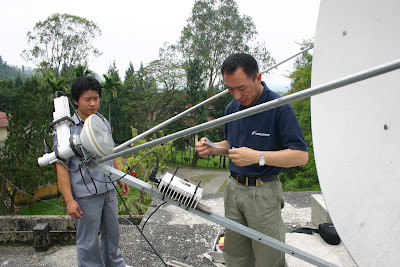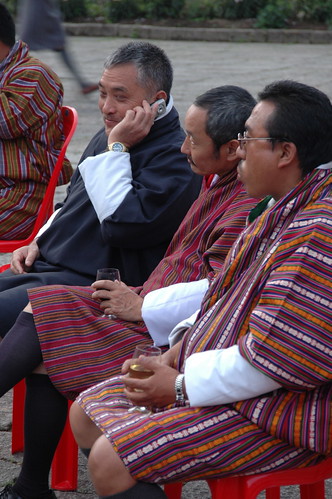Playing Khuru
Guys, this post is in the form of an audio file about Khuru; the transcript can be found below. gListen to the file and learn about Bhutan. Pictures accompanying this post are here.
A warm welcome to y’all out there. This is Sam – aka Sam Dorji - from
During the next couple of weeks, I’d like to present you a couple of audio samples from
The first audio sample gives you an impression of a traditional Bhutanese game. The name of the game is Khuru and it is played by men all over
Khuru is played in teams of about 10 people and two or three teams share a track. In every round, every player throws his two Khurus and tries to hit a target that is about 20 meters from the players. The target is a small wooden plate and all the players that have already thrown both of their Khurus gather around this target. Considering that the Khurus have nails in the front, this looks a bit dangerous and incidences happen now and then. Let me tell you, you don’t really want to get hit by a Khuru – your foot might be badly damaged and if you are not lucky and it is not your foot but your stomach – then you’ll probably be lucky to spend a couple of months in the hospital at the best. The players gather as close as only possible around the target and try to convince the Khuru to find its way into the target. They do so by shouting, dancing, pointing, and running. It’s quite an amazing view. But the real fun starts only when one player hits the target. That’s the time when all members of the team start to perform a dance and sing loudly. It’s quite a song that they perform – so let us listen to such a song:
Did you like the song? Can you imagine how they dance? You probably start to understand why it is hard to get a good feeling for
Let us continue where we left. The team that gets most hits during a round wins a point. Sorry, I cannot quite recall how many points you get, but I think it depends on the number of times that you have hit the target and how many times the opposing teams have hit the target. If none of teams hits the target itself, the Khurus close to the target are counted. The team that acquires first 25 points has won the game. It might be that the number of points that you have to get in order to win a game might be different from tournament to tournament; I’m not quite sure.
The Khuru tournament that I have observed today started in the morning at 8:45am and most of the games were still going on at 3pm. Being in the sun all day long – considering that it is about 30 degrees Celsius in Samtse – and throwing the Khurus to a target 20 meters away makes Khuru quite a tiring sport. Folks out here love playing Khuru but often they have a sour arm the day after.
Guys, hope that I could give you an impression about life in







